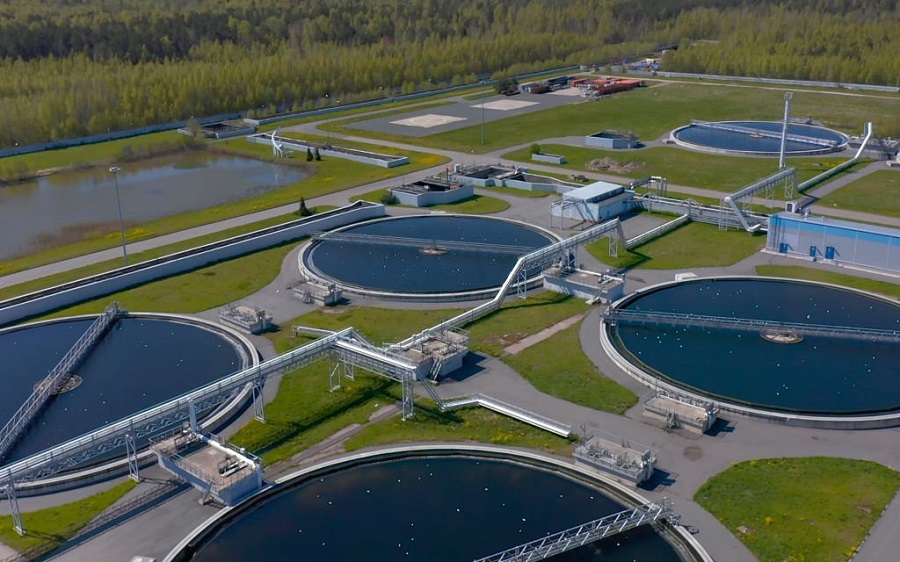Sewage treatment plants are a basic necessity in India. Due to their commendable service pan India, they have gained immense popularity across the country. The gravity of water pollution was understood only when sewage treatment plants were installed in various regions in India. There are different categories of sewage treatment plants that are currently functional in the country.
Each type of sewage treatment plant is engineered to serve a specific purpose. Thanks to technological advancement, we now have multiple methods to address water pollution issues. Sewage water treatment processes not only allow us to reuse water but also help to keep the environment clean and toxic-free.

Let us dive in and try to understand the common types of sewage treatment plants in India.
Sequencing Batch Reactor Sewage Plant
Sewage treatment plants in India have paved their way to success in a short period. The necessity of water conservation and pollution management is nationally recognised and needed. Today, we have a series of ideas and methods to tackle water pollution with great ease.
The Reactor Used for Sludge-sewage Treatment:
The activated sludge treatment technique is used in Sequencing Batch Reactors or SBR, a very active form of wastewater curing procedure. The tanks installed help to transfuse oxygen through sewage and activated sludge. The process reduces the saturation of organic content in the water. The treated wastewater is then made suitable to use on land or as surface water. The time period required for the aeration of water is calculated by the volume of water to be treated and the plant’s capacity.
The procedure involves the use of one or maybe several tanks, depending upon the dirt accumulation. The tanks offer a ‘flow-through’ mechanism which enables wastewater to enter from one end and flow out from another, getting purified in between. There are five core stages in the SBR method that helps to cure water and make it fit to consume.
The SBR process helps in eradicating phosphorus, nitrogen, and other bacteria/microorganisms present in water.
Advantages of SBR Sewage Treatment Plants:
- It offers excellent flexibility in function and maintenance
- Provides impeccable treatment efficiencies
- Various phases can be accomplished in a single reactor vessel – such as initial & secondary classifications, biological treatment and equalisation
- Produces electric energy from biogas
- A compact tank minimises the necessary space for purifying wastewater
- Is cost-effective (operation cost is low)
Membrane Bioreactor Sewage Plant
Next up, we have the Membrane Bioreactor Sewage Plant MBR. The MBR is a system that functions via membrane processes. The activated sludge procedure (a biological wastewater treatment methodology) is teamed with the microfiltration (MF) or ultrafiltration (UF) process. The MBR sewage treatment technique is mainly used to cure municipal and industrial wastewater.
The MBR system branches into 10-11 subsystems, several membrane zones and intricate screening headworks. The primary function of the membranes is to sieve organic constituents from water. This process is often executed with the help of clarifiers and filters found in activated sludge functions. The first phase in weakening contaminants is the membrane zone. These contaminants are then separated using a series of membrane screens.
Advantages of Using an MBR System:
- Produces superior-quality effluent
- It does not take up a lot of space
- It is easy to retrofit
- Allows modernisation of old sewage treatment plants in India
- Offers better bio-treatment
- The cost of erasing sludge is lessened
- Sand filtering is not needed
- Easy to use
MBR has become a renowned sewage water treatment method due to its complex yet innovative technology. Other than this, its cost of operation is also relatively low since it only uses membranes. MBR is currently recognised as one of the most successful sewage treatment plants in India.
Sewage Treatment Plants with Movable Biofilm Reactors
The Moving Bed Biofilm Reactor, sewage treatment technology, was founded in the late 1980s. The process requires an aeration tank with plastic transporters filled with wastewater to be used during the MBBR process. This method helps to initiate the formation of biofilm. Both the water and the carriers have the same density. Ideally, activated sludge operations need sludge recycling. However, it is not the same as the MBBR process. It is believed to be a superior technique to other invented, traditional tactics.
Advantages of Using an MBBR System:
- Absolute solid removal
- Smaller sections ask for less space
- Offers enhanced process stability
- Offers enhanced treatment volume
- Regular backwashing is not needed
Where to Find Reliable Sewage Treatment Plants in India?
To ensure your surroundings remain clean and healthy, hire our highly skilled Cleantech Water staff today! You may come across several wastewater treatment companies in India, but nothing beats the services and products offered by the engineers at Cleantech Water plants. We do not believe in compromising the quality of sewage water treatment plants to meet the deal price. Our products are tested and go through several trials in the factory before they are approved by our experts. Our installers work hard to offer superior-quality sewage treatment plants to all our clients.
Cleantech Water is by far the leading water solutions company in India, offering only tested sewage treatment plants in India. We assure you all our sewage plants are long-lasting, durable and high-functioning.
Contact us today at info@cleantechwater.co.in or call us at +91-9558996411. We will be happy to help you out!

